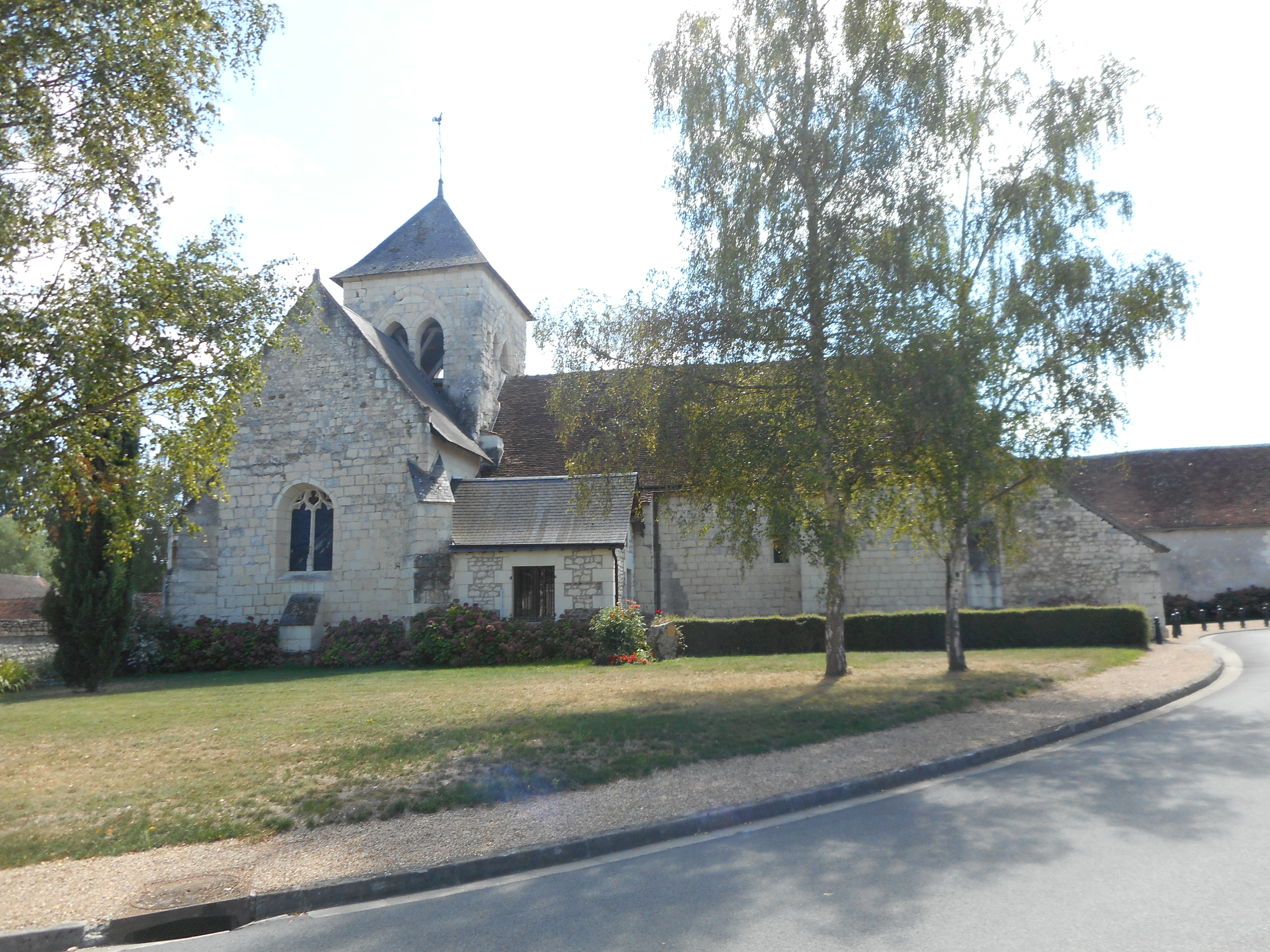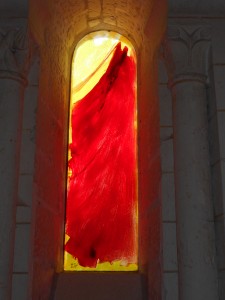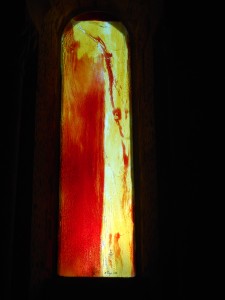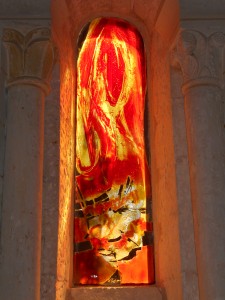L’église Saint-Martin de Marcé-sur-Esves est un édifice du XIè et XIIè siècle, agrandi au XVè et XVIè siècle. Elle a été donnée en 1080 à l’abbaye de Noyers par le chevalier de Montbazon qui était devenu moine dans ce monastère.
Dans l’église se trouve une chapelle renaissance, une voûte sur ogive, liernes et tiercerons avec clef pendante. La croisée d’ogives carrées est refaite au XIIIè siècle pour supporter le clocher. Chapiteaux du XIIè et XIIIè siècle. Chapelle seigneuriale édifiée au XVè siècle par les seigneurs de la Louère. L’abside est de la deuxième moitié du XIIè siècle (1150-1180) construite sur un plan semi-circulaire mais trapézoïdale à l’intérieur. La voûte « Angevine » est sur croisée d’ogive, les nervures retombent sur des chapiteaux du XIIè siècle à tête de monstres très courants en Poitou. Elle est éclairée par trois fenêtres en plein-cintre. La nef est du XIè siècle, plus rustique que le chœur qui fut construit par deux ou trois moines détachés de l’abbaye de Noyers. La nef est éclairée par de petites fenêtres en plein-cintre, la charpente est moderne. La porte en plein-cintre est à deux rouleaux dont le second retombe sur des colonnettes. A l’intérieur, se trouve une statue en pierre d’un évêque, du XVIè siècle. L’église abrite dix vitraux de Nobert Pagé (1938-2012), posés entre 2002 et 2003, dont trois sont dédiés à saint Martin : Un présentant le manteau, un autre les visions et un dernier l’évangélisation des campagnes.
Le vitrail du manteau se trouve dans le chœur. Il figure un drap rouge qui représente le manteau de saint Martin qu’il partagea avec le pauvre. Ce vitrail est réalisé en 2003 par Norbert Pagé (1938-2012). C’est un vitrail sans plomb de type monolithique, peinture sur verre thermoformé.
Le vitrail des visions de Martin se trouve dans le chœur. Il présente les visions de saint Martin. Ce vitrail est réalisé en 2003 par Norbert Pagé (1938-2012). C’est un vitrail sans plomb de type monolithique, peinture sur verre thermoformé.
Le vitrail de saint Martin qui évangélise les campagnes se trouve dans le chœur. Il présente saint Martin évangélisant les campagnes en brûlant les temples des faux dieux. Il a été réalisé en 2003 par Norbert Pagé (1938-2012). C’est un vitrail sans plomb de type monolithique, peinture sur verre thermoformé.
L’église est inscrite sur la liste des Monuments Historiques le 2 avril 1963 : PA00097861
The church of Saint-Martin de Marcé-sur-Esves is an 11th and 12th century building, enlarged in the 15th and 16th centuries. It was given to the abbey of Noyers in 1080 by the knight of Montbazon who had become a monk in this monastery.
In the church there is a Renaissance chapel, a vault on ogives, liernes and tiercerons with hanging key. The square ribbed crossing was rebuilt in the 13th century to support the bell tower. Capitals from the 12th and 13th centuries. The seigniorial chapel was built in the 15th century by the Lords of La Louère. The apse dates from the second half of the 12th century (1150-1180) and was built on a semi-circular plan, but is trapezoidal inside. The « Angevin » vault is on a pointed arch, the ribs fall on 12th century capitals with monsters’ heads, very common in Poitou. It is illuminated by three semi-circular windows. The nave is from the 11th century, more rustic than the choir, which was built by two or three monks detached from the abbey of Noyers. The nave is lit by small round-headed windows, the roof structure is modern. The semicircular door has two scrolls, the second of which falls on columns. Inside, there is a stone statue of a bishop from the 16th century. The church has ten stained glass windows by Nobert Pagé (1938-2012), installed between 2002 and 2003, three of which are dedicated to Saint Martin: one showing the mantle, another the visions and the last the evangelisation of the countryside.
The stained glass window of the mantle is in the choir. It shows a red cloth representing St Martin’s cloak which he shared with the poor. This window was made in 2003 by Norbert Pagé (1938-2012). It is a lead-free stained glass window of the monolithic type, painted on thermoformed glass.
The stained glass window of the visions of Martin is located in the choir. It shows the visions of Saint Martin. This stained glass window was made in 2003 by Norbert Pagé (1938-2012). It is a lead-free stained glass window of the monolithic type, painted on thermoformed glass.
The stained glass window of St Martin evangelising the countryside is in the choir. It shows St Martin evangelising the countryside by burning the temples of the false gods. It was made in 2003 by Norbert Pagé (1938-2012). It is a lead-free stained glass window of the monolithic type, painted on thermoformed glass.
The church was listed as a Historic Monument on 2 April 1963: PA00097861

 "/>
"/>


